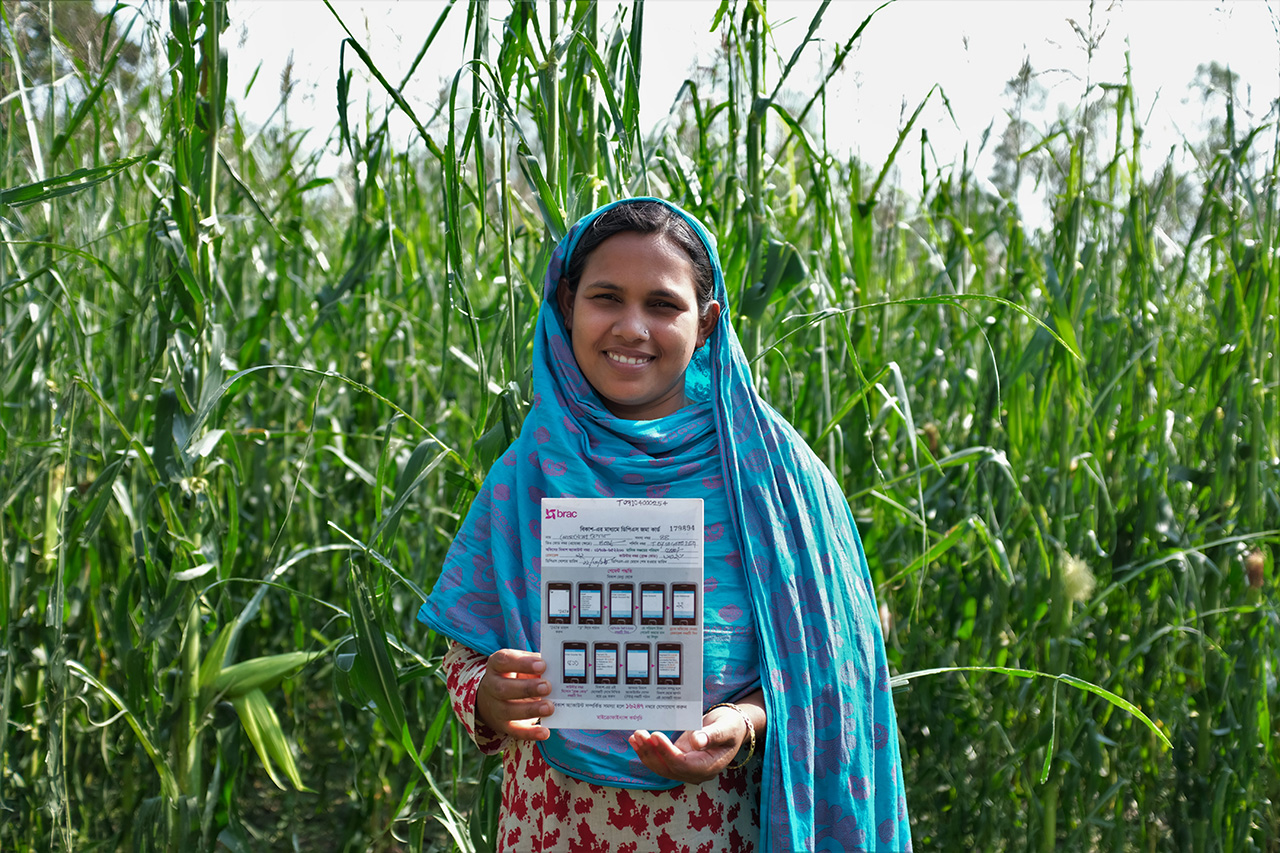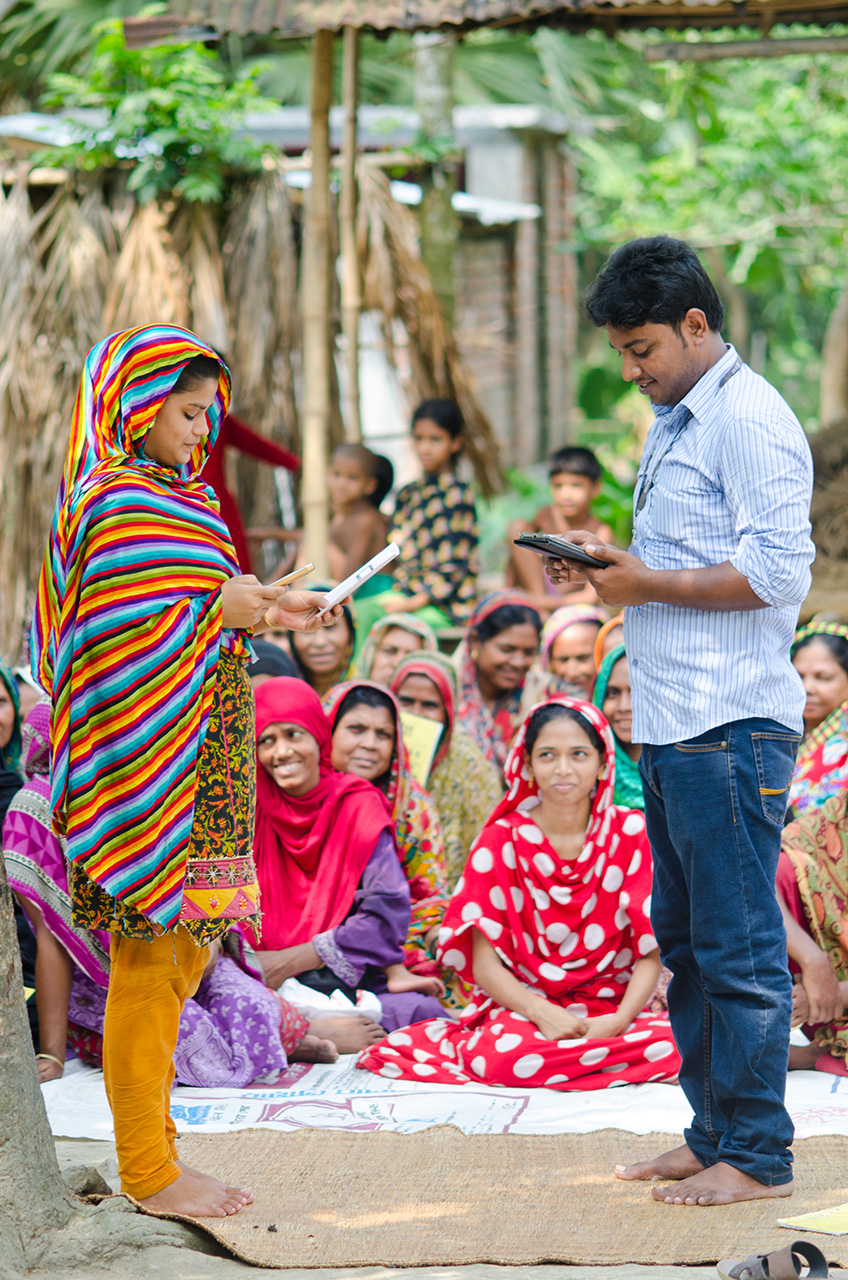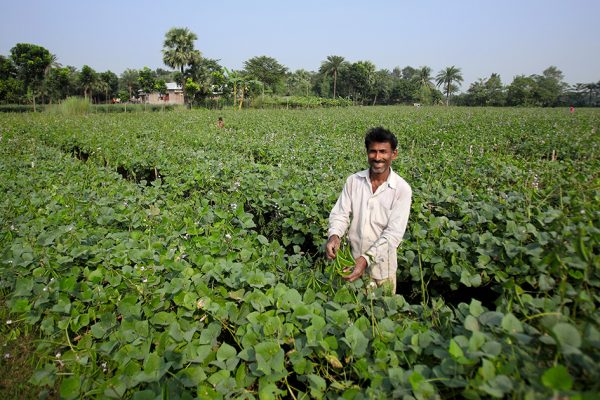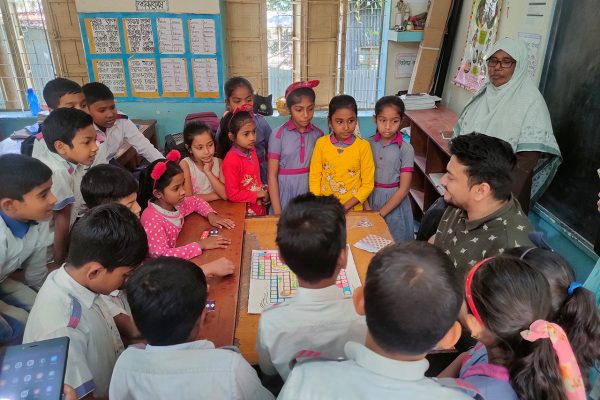Going digital: Taking financial inclusion to new horizons
Reading Time: 3 minutes
Financial inclusion leads to greater empowerment and participation in the economy. It also plays a role in bridging the digital divide.
On 24 June 2019, I attended my first field visit from BRAC’s microfinance programme. I shadowed the programme organiser in Badda, and went to client households to collect Dabi loan instalments. Dabi is one of the many products of the microfinance programme designed particularly for women, and it directly translates to ‘demand’ or ‘right’ in Bengali. The name symbolises BRAC’s belief that access to financial services should be a basic human right irrespective of social standing.
Before joining as an intern, I was always interested in the concept of financial inclusion, how the digital divide in developing countries such as Bangladesh is impeding development, and what is being done to resolve this. Digital divide refers to an uneven distribution of access to information and communication technologies between distinct groups. I was eager to go to the field to see how financial inclusion is playing a part in helping reduce the present digital divide.
On my field visit, I got the opportunity to personally meet the clients and have a brief conversation regarding what they typically do with their Dabi loans. The stories varied from client to client. Their utilisation of the loans gave me a perspective as to how access to finance can empower a vital section of the community to become self-reliant, confident, and give them hope to build a better life for themselves and their families.

It was fascinating to learn about how most clients take out loans and make smart investments in activities that will make them financially self-reliant in the future instead of spending on liabilities. For example, a client mentioned how she is using her loans to buy land. She is aware that due to land scarcity in the densely populated Bangladesh, the value of and demand for land will expeditiously increase over the years. Therefore, to have self-generating income in the long run, she is planning on purchasing land and start a business. Alongside, she currently manages her tea shop with her husband, and a portion of the loan goes into purchasing the items needed, such as biscuits and tea infusions.
Even though all BRAC Microfinance product operations and services are running smoothly, in an evolving era, there’s always room for improvement. When shadowing the programme officer for the overdue collection from client households, I observed that there is scope for better utilisation of time in the future.
We spent an average of 25-30 minutes at each household and a majority of the time was spent with the clients looking for their physical passbooks (used for recording the instalment or loan repayment). Within that time frame, at least two other clients could have been covered in the same area.

BRAC Microfinance has been moving towards digitalisation since the last few years. Hence, different pilot initiatives, such as the digital claim process and digitisation of the passbook, which lists all the transactions of an individual client, have been introduced recently. Digitising the passbook can counter the problem discussed by letting technology complement human interactions, resulting in higher efficiency and transparency. Clients in currently piloted areas no longer have to use their manual passbooks to deposit and pay instalments. Alternatively, they receive a confirmation text message once their transaction is complete.
Is a text message in place of a physical signature on a passbook sufficient to reduce the digital divide present in Bangladesh? From my perspective, it is a bridge and a starting point for developing and least-developed countries to push for greater connectivity and slowly eliminate the digital divide. However, more support is needed if we are ever to close the digital divide.
Eliminating the manual passbook and digitising the process is just the start of BRAC’s many initiatives such as its collaboration with ShopUp, sanitation loan via mobile money, deposit premium scheme through digital financial services – all integrating technology to provide greater value to clients. It is evident that financial inclusion leads to greater empowerment, participation in the overall economic activities, and reduction of the digital divide present in Bangladesh. It encourages the low-income population to utilise and embrace the evolving technological advancement to access broader services including, but not limited to, financial services.
Mitigation of the digital divide can, to a great extent, address the access to information and finance, get the unbanked population, especially those living in remote regions, into the banking system, and advance towards Bangladesh’s goal of achieving full financial inclusion.
Mehryaar Abrar Anwar is an intern at BRAC Microfinance.





